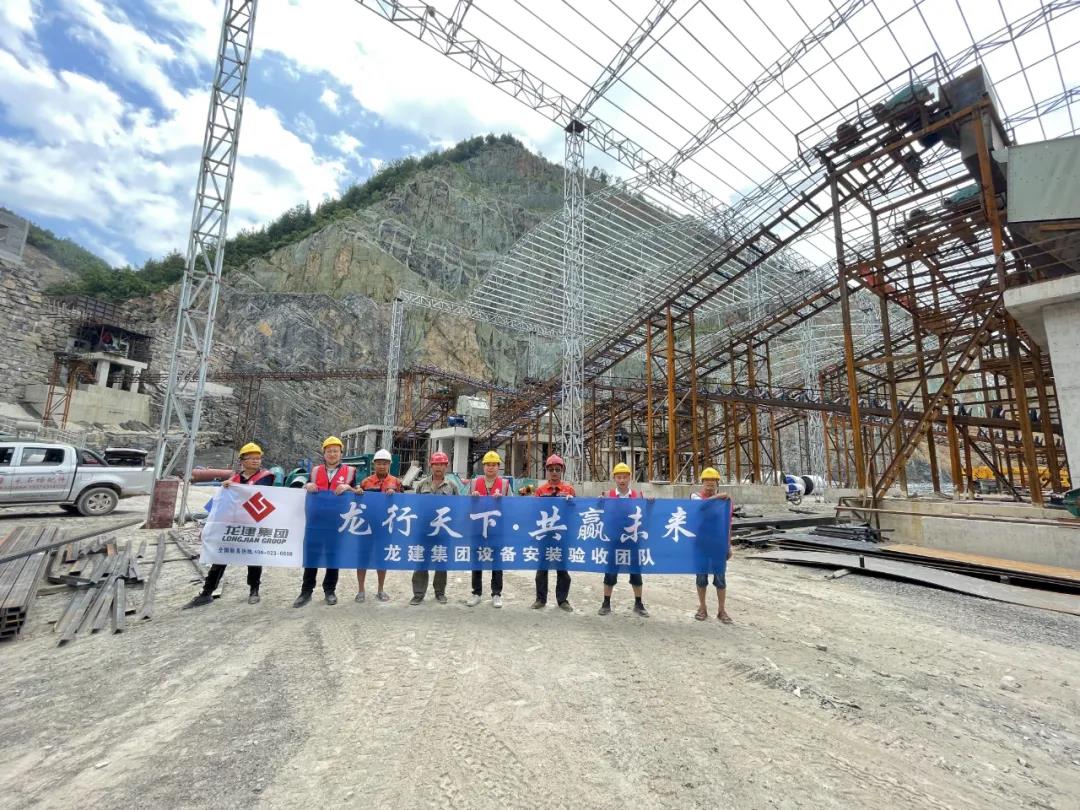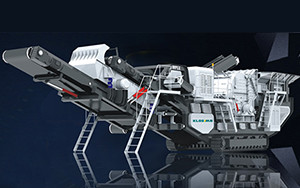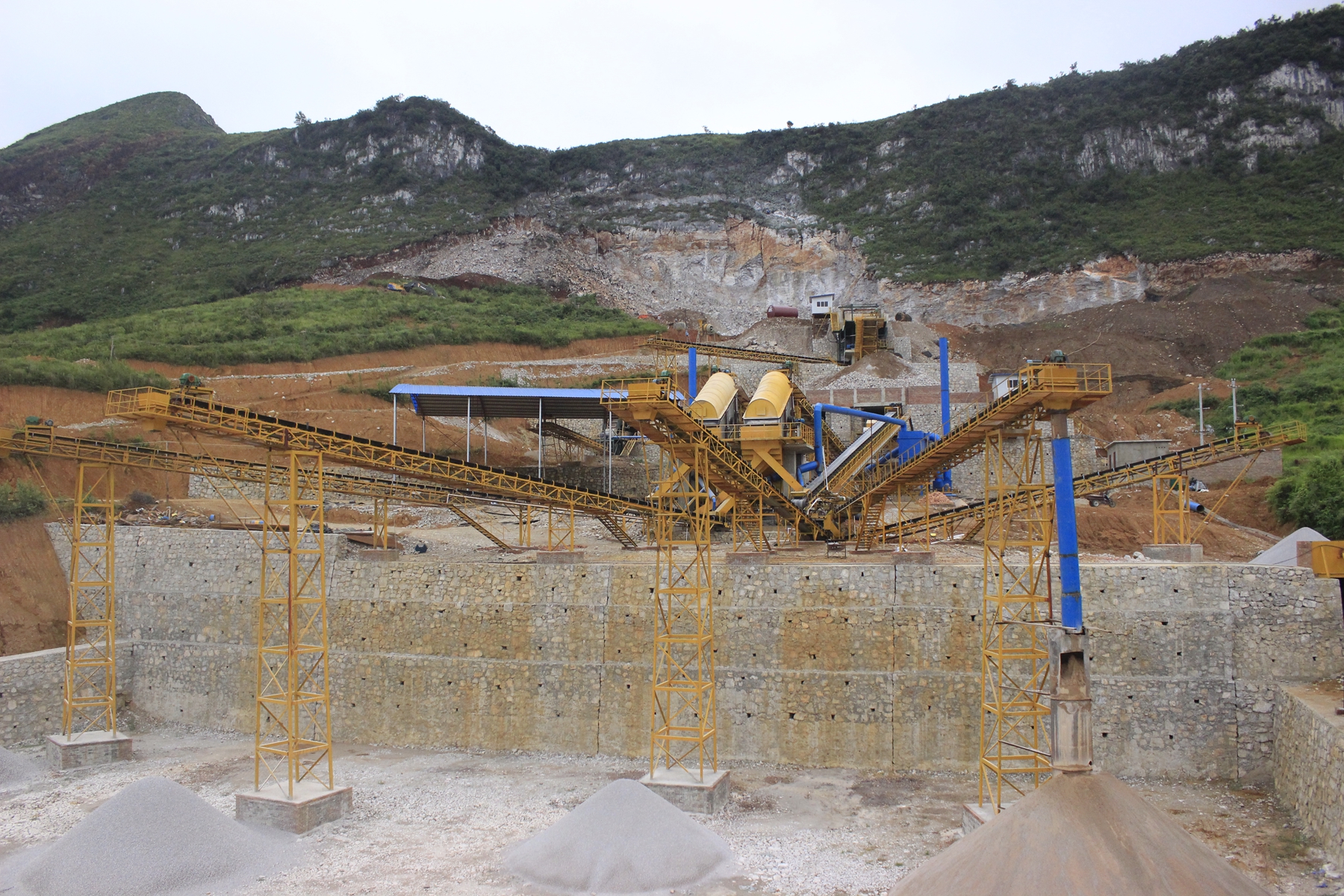The jaw crusher is a machine that operates under very bad working conditions. Therefore, it is necessary to do maintenance and management of the machine. Only in this way can the machine be operated normally and the productivity of the machine can be improved.
1. Maintenance content
There are roughly three types of planned maintenance for jaw crushers: minor repair, intermediate repair and overhaul. Minor repairs and medium repairs are the main repair methods. Through minor repairs and intermediate repairs, maintain the equipment to make it work well during the two major repairs, and determine the content of the major repairs. The two repair time intervals proposed by Chongqing Longjian Industrial Group are calculated based on three shifts per day.
The main contents of minor repairs: check and repair the adjustment device, adjust the gap of the ore outlet; replace the worn lining plate and thrust plate; repair and replace the transmission parts; clean the individual parts of the crusher; replace the lubricating oil, repair and adjust the lubrication system Wait. The interval between minor repairs depends on the operation of the equipment, and is generally from half a month to once a month.
The main content of the middle repair: including all the work content of the minor repair. In addition, replace worn thrust plates, bushings, tie rods, linings; inspection, turning, grinding, and casting of eccentric bushes, connecting rod head bushes, and movable jaw bushes. The interval between two intermediate repairs depends on the wear of the main bearing shell, connecting rod bearing shell and moving jaw bearing shell, which is generally once a year.
The main content of the overhaul: including all the work of the middle repair. In addition, the eccentric shaft and moving jaw mandrel of the crusher were replaced or turned; the Babbitt alloy on the upper part of the casting rod head was replaced; all worn parts and components were replaced and restored; the entire crusher was calibrated and technical innovations were made on the equipment. At present, most of the repair of crushers is to replace the entire component, that is, the component pre-repair method. This method requires the concentrator to have all the components of the crusher. When repairing, just remove the worn parts and replace them with new ones. This greatly shortens the downtime of the machine compared to the method of replacing parts, thus improving the operation rate of the crusher.
Second, the maintenance method
During the operation of the jaw crusher, various parts are worn under the influence of friction, and the most wearable and consuming parts are movable lining, fixed lining, upper flat lining, flat lining, thrust plate, support Pad (slider), rolling bearing or sliding bearing, spring, etc. However, sometimes due to long-term wear or accidents, premature wear and damage are caused. Parts and components such as flywheels and airframes also need to be repaired to ensure their effectiveness. Factors that affect the premature wear and damage of the crusher parts are: the structure and working quality of the parts; the physical and mechanical properties of the crushed ore; the ore crushing ratio; the material of the parts; the quality of the installation;
3. Replacement and repair of main parts
1. Disassembly of jaw crusher.
The most frequent repair item of jaw crusher is the replacement of thrust plate. For the crusher whose connecting rod is integral, to remove the thrust plate, you must first unscrew the bolt of the baffle, cut off the dry oil lubricating pipe, hang the thrust plate on the crane hook or other lifting device, and then release it The spring at one end of the horizontal rod pulls the moving jaw to the direction of the fixed jaw, and takes out the thrust plate. If you want to remove the rear thrust plate, you should pull the connecting rod together with the front thrust plate and the movable jaw, and remove the rear thrust plate. Generally, a steel wire rope is used to pass through the opening on the foundation, and the movable jaw or the movable jaw and the connecting rod are pulled apart from the front wall of the crusher by the manual winch for removing the thrust plate. Before pulling apart, the connecting rod should be placed at the bottom position. When the connecting rod is in this position, the mine outlet is the largest. In order to disassemble the movable jaw, you must first cut the dry oil lubricating pipe, disassemble the lever, remove the bearing cover, and then use a crane or other lifting equipment to pull the movable jaw out.
2. Repair of moving jaw shaft.
The movable jaw shaft journal of the compound pendulum jaw crusher should be repaired when it is worn to the following extent: ellipticity> 0.05 mm; conicity> 0.04 mm; surface convexity and concavity> 0.04mm. The repair method of the journal is as follows: 1) Under the condition that the strength permits, the worn journal is turned and embedded after turning to restore the original fitting size. The thickness of the sleeve is 4 ~ 6mm, and D / gc can be used for matching. 2) Use appropriate technical measures to weld the worn journal to the “long flesh” by welding, and then turn it to restore the original fit size (this method is only applicable to the repair of the journal of the body part). 3) When conditions permit, use vibration welding and metal spraying methods to repair and restore the original matching dimensions.
3. Repair of eccentric shaft.
The eccentric shaft of the simple pendulum jaw crusher should be repaired when it is worn to the following degree, the ellipticity> 0.10 ~ 0.15 mm; the conicity> 0.08 ~ 0.12 ram; the convexity and concaveness of the journal surface> 0.10 ~ 0.12ram. The repair method is: 1) According to the wear condition, lathe turning and scraping repair can be adopted. After repair, the journal is slightly smaller than the original matching size. At this time, sliding bearings should be prepared. 2) In special cases, under the premise of strength permit (such as severely damaged journal), the original journal can be nested after turning to restore the original fit size. The thickness of the sleeve is 5-6mm, and D / gc can be used. 3) When conditions permit, vibration welding and metal spraying can be used to repair and restore the original matching size.
4. Sliding bearing of eccentric shaft.
The repair of the repair bearing is mainly determined according to the limit value of the top clearance and the change of geometric shape. When the bearing has no serious local wear and the top clearance increases, the pad removal method can be taken to adjust the top clearance, but when the wear exceeds the general prescribed limit (0.25% of the journal) and the local wear is serious and has a large area If it breaks (drops), it must be repaired immediately. The repair methods are: ① Local repair and turning processing of local defects, such as grinding deviation, ellipse, large and small cracks, and partial block loss, the simplest method can use gas welding to repair meat, manual scraping or mechanical processing, which is fast and easy, and the effect is basic It is reliable (the original babbitt material should be used to fill the meat as much as possible). ②All re-cast or layered gas welding "long meat". Bearings with a thickness of more than 10mm are cast, and with a thickness of less than 10mm, layered gas welding "long meat" can be used. The thickness of the welding repair should be at least 4mm or more, and then it can be processed with a machine tool.
5. Repair of connecting rod.
Cracks, breakage, bearing hole wear, wear or wear of the bearing pad groove, and connection screw tripping should be repaired in time during the working process. Practice has shown that cracks in the lower part of the connecting rod even break In the event of a major accident, if repair technical measures are taken properly, it can basically be restored to use. Cracks or breaks in connecting rods generally appear in the lower part. The specific repair methods are often direct welding and reinforcing steel plate welding. The direct welding method is relatively simple, suitable for medium, small, short, and shallow cracks. Welding steel plates are more difficult to weld, but the effect is reliable. It is suitable for large, long, deep cracks and breaks.
Keywords: maintenance management of jaw crusher
-
 Focus Project | With a total investment of 487 million yuan, The customer of Sanming Heavy Industry in Liuzhou, Guangxi will soon build an annual output of 4 million tons of fine sand aggregate production line
Focus Project | With a total investment of 487 million yuan, The customer of Sanming Heavy Industry in Liuzhou, Guangxi will soon build an annual output of 4 million tons of fine sand aggregate production line -
 The 2022 Spring Festival holiday notice of Longjian Group
The 2022 Spring Festival holiday notice of Longjian Group -
 Longjian Group held a virtual equity incentive promotion meeting in the fourth quarter of 2021
Longjian Group held a virtual equity incentive promotion meeting in the fourth quarter of 2021 -
 Hand in hand to build heart to heart | Longjian Group Party branch went to Dashu Village to carry out "Urban and rural branches hand in hand" pair to build donation activities
Hand in hand to build heart to heart | Longjian Group Party branch went to Dashu Village to carry out "Urban and rural branches hand in hand" pair to build donation activities -
.png) Chongqing "Meter" high-speed Railway Network Construction | Full Construction in five years, Full operation in ten years -- Chengdu-Chongqing Middle Line high-speed railway Construction "Acceleration"
Chongqing "Meter" high-speed Railway Network Construction | Full Construction in five years, Full operation in ten years -- Chengdu-Chongqing Middle Line high-speed railway Construction "Acceleration" -
How to create green mines and green factories?
-
 In the process of installation and acceptance of equipment of sand and gravel aggregate production line with production capacity of 600 tons at the beginning of construction in Hubei Province
In the process of installation and acceptance of equipment of sand and gravel aggregate production line with production capacity of 600 tons at the beginning of construction in Hubei Province -
 Warmly congratulated: Mr. Long Fujian, chairman of the group company, was elected vice president of Chongqing sand and stone association
Warmly congratulated: Mr. Long Fujian, chairman of the group company, was elected vice president of Chongqing sand and stone association










